Search result67 results
-
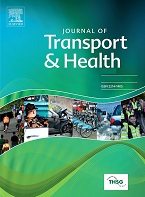
Validation of the Walking Behavior Questionnaire (WBQ): A tool for measuring risky and safe walking under a behavioral perspective
Sergio Useche, Francisco Alonso, Luis Montoro
(2020). ArticleJournal of Transport & Health. No.18:100899
Introduction Although daily walking implies several potential benefits for the health and well-being of people, and, besides the raise of more “walkable” cities, it is currently being promoted as an active transportation means that is rich in benefits for its users, road risks affecting pedestrians, together with their high vulnerability to suffer severe injuries as a consequence of traffic crashes, have turned into a relevant concern for both policymakers and public health practitioners. In this regard, risky and positive (proactively safe) behaviors have acquired a substantial relevance for the study and prevention of traffic causalities involving different road users, including...
Introduction Although daily walking implies several potential benefits for the health and well-being of people, and, besides the raise of more “walkable” cities, it is currently being promoted as an active transportation means that is rich in benefits for its users, road risks affecting pedestrians, together with their high vulnerability to suffer severe injuries as a consequence of traffic crashes, have turned into a relevant concern for both policymakers and public health practitioners. In this regard, risky and positive (proactively safe) behaviors have acquired a substantial relevance for the study and prevention of traffic causalities involving different road users, including pedestrians. Objective The objective of this study was to thoroughly describe the validation of an instrument for measuring the walking risky and positive behavior on the road, using the Walking Behavior Questionnaire (WBQ). Methods This cross-sectional study analyzed the data from 1070 Spanish pedestrians answering a questionnaire on road behaviors. The data were analyzed using the competitive Confirmatory Factor Analysis (CFA), thus obtaining basic psychometric properties, testing convergent validity and predictive value, and presenting an optimized structure for the scale. Results The obtained findings suggest that the WBQ has a clear dimensional structure, items with high factorial weight, good internal consistency and reliability and an adequate convergent validity with variables theoretically associated with road behaviors. Conclusion The results of this study endorse the psychometric value of the WBQ for measuring errors, violations and positive behaviors of pedestrians. This questionnaire might have relevant applications in the practical field, since, apart from having good psychometric properties, it introduces items related to social and technological trends (e.g., the use of cellphones) that may compromise pedestrians’ safety. This can be particularly useful for designing behavioral-based interventions and educational programs, focused on road risk reduction and on the promotion of safe walking behavior.
Read more Hide DOI: 10.1016/j.jth.2020.100899ISSN: 2214-1405 -

A matter of style? Testing the moderating effect of driving styles on the relationship between job strain and work-related crashes of professional drivers
Sergio Useche, Boris Cendales, Francisco Alonso, Mauricio Orozco-Fontalvo
(2020). ArticleTransportation Research Part F: Traffic Psychology and Behaviour. No.72
Different empirical studies suggest that both job strain and driving styles are significant contributors to the work-related traffic crashes suffered by professional drivers. Nevertheless, the current evidence falls considerably short when explaining why driving styles may modify (or not) the relationship between occupational stressors and professional drivers’ safety outcomes. The aim of this study was to examine whether driving styles moderate the effect of job strain on professional drivers’ Work Traffic Crashes (WTCs). This research was performed using the data collected from a sample of 753 professional drivers, responding to a self-report questionnaire on job strain (work stress...
Different empirical studies suggest that both job strain and driving styles are significant contributors to the work-related traffic crashes suffered by professional drivers. Nevertheless, the current evidence falls considerably short when explaining why driving styles may modify (or not) the relationship between occupational stressors and professional drivers’ safety outcomes. The aim of this study was to examine whether driving styles moderate the effect of job strain on professional drivers’ Work Traffic Crashes (WTCs). This research was performed using the data collected from a sample of 753 professional drivers, responding to a self-report questionnaire on job strain (work stress indicator of the Job Demand-Control model), driving styles and work-traffic safety outcomes suffered in the past two years. Regression-based moderation analyses suggest that the job strain of professional drivers is positively associated with the occupational traffic crashes they suffer, and that such association is stronger in drivers with “reckless & careless”, “anxious”, and “angry & hostile” driving styles. Meanwhile, the “patient & careful” (positive) driving style was not associated with a lower risk of suffering a WTC, nor with a lower vulnerability to stress-related WTCs. The results of this study support the hypothesis that driving styles exert a statistical moderation between the job strain and the occupational traffic crashes suffered by professional drivers. These findings may support the design of evidence-based interventions in both the organizational and individual levels, focused stress-related factors and driving styles as predictors of work traffic crashes.
Read more Hide DOI: 10.1016/j.trf.2020.05.015ISSN: 1369-8478 -

Plan Estratégico Nacional de Peatones de la República Dominicana
Francisco Alonso, Cristina Esteban, Jose Luis Velarte, Enrique Casquero, Jorge Suarez, Mireia Faus, Sergio A. Useche
(2020). LlibreIn the "National Strategic Plan for Pedestrian Safety for the Dominican Republic 2020-2023", 17 solutions are proposed to the problems of safe pedestrian movement in our country, ranging from "Improvement and optimization of road training", "Optimization of the characteristics and condition of vehicles", "Diagnosis of road safety with respect to the needs of pedestrians", to "Detection and punishment of risk behavior" and "Establishment of systems for evaluating measures", to mention a few; as well as tied to the first are about 32 specific measures, among which are the aforementioned "Pedestrian Safety" and others such as promoting road safety education, establishing minimum standards of...
In the "National Strategic Plan for Pedestrian Safety for the Dominican Republic 2020-2023", 17 solutions are proposed to the problems of safe pedestrian movement in our country, ranging from "Improvement and optimization of road training", "Optimization of the characteristics and condition of vehicles", "Diagnosis of road safety with respect to the needs of pedestrians", to "Detection and punishment of risk behavior" and "Establishment of systems for evaluating measures", to mention a few; as well as tied to the first are about 32 specific measures, among which are the aforementioned "Pedestrian Safety" and others such as promoting road safety education, establishing minimum standards of vehicle safety, audits to the road network, regulatory compliance to attack risky behaviors, among others.
Read more Hide ISBN: 978-9945-9238-5-8 -

The closer… the unsafer: may the lack of safe distance be a silent contributor to the burden of traffic crashes in Spain?
Francisco Alonso, Mireia Faus, Sergio Useche
(2020). ArticleCuadernos Latinoamericanos De Administración. No.16(30)
Not keeping an adequate safe distance is one of the elements that are directly related to traffic accidents. The main objective of this research was to identify the aspects that modulate the safe distance-accidents relation. Specifically, the frequency and reasons why drivers do not keep the safe distance, the perception of drivers regarding the probability of penalty, the penalties imposed and their severity, and the drivers’ opinion on the effectiveness of such penalties in order to change this behavior. A questionnaire was administrated to a sample of 1,100 Spanish drivers having any kind of driving license. The results showed that only the 5,6% of drivers always or sometimes do not keep...
Not keeping an adequate safe distance is one of the elements that are directly related to traffic accidents. The main objective of this research was to identify the aspects that modulate the safe distance-accidents relation. Specifically, the frequency and reasons why drivers do not keep the safe distance, the perception of drivers regarding the probability of penalty, the penalties imposed and their severity, and the drivers’ opinion on the effectiveness of such penalties in order to change this behavior. A questionnaire was administrated to a sample of 1,100 Spanish drivers having any kind of driving license. The results showed that only the 5,6% of drivers always or sometimes do not keep the safe distance. Among the specific reasons, the traffic conditions and congestions and drivers not realizing they were not keeping a safe distance were the most frequent ones. Likewise, drivers perceived that the probability of being caught (sanctioned) as a consequence of this misbehavior is considerably limited. Moreover, there were no respondents who had received a fine for not keeping a safe distance while driving. The results contrast with previous studies in which it is showed that not keeping a safe distance is a quite frequently behavior, and remark shat several efforts are needed for strengthen the awareness of people in this matter, with the aim of reducing traffic crashes related to it, and their high multidimensional burden for societies.
Read more Hide DOI: 10.18270/cuaderlam.v16i30.2842ISSN: 1900-5016 -

Plan Estratégico Nacional de Movilidad Eléctrica de República Dominicana
Fernando Anaya Reviewer: Francisco Alonso
(2020). LlibreThe National Strategic Plan for Electric Mobility arises as part of the main objectives of the creation of the working group on alternative energy for transportation, which responds to the country's commitment made in the Paris Declaration and Call for Action on Electric Mobility and Climate Change (COP21), with the aim of reducing greenhouse gas (GHG) emissions by 25% before 2030.
-
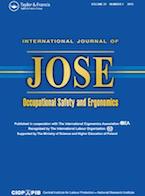
Multidimensional prediction of work traffic crashes among Spanish professional drivers in cargo and passenger transportation
Sergio Useche, Boris Cendales, Francisco Alonso, Luis Montoro
(2020). ArticleInternational Journal of Occupational Safety and Ergonomics.
The aim of this study was to examine the effect of different environmental, mechanical and individual factors associated with fatalities and serious injuries caused by work traffic accidents among cargo and passenger transport drivers (CPTD) in Spain. For this cross-sectional study, national data on work traffic accidents collected in Spain during the last 3 years were analyzed through a regression modeling approach, in order to predict the severity of traffic crashes involving CPTD. Using binary logistic regression analyses, it was found that the type of road and accident, the meteorological, light and vehicle conditions, individual characteristics and risky driving behaviors significantly...
The aim of this study was to examine the effect of different environmental, mechanical and individual factors associated with fatalities and serious injuries caused by work traffic accidents among cargo and passenger transport drivers (CPTD) in Spain. For this cross-sectional study, national data on work traffic accidents collected in Spain during the last 3 years were analyzed through a regression modeling approach, in order to predict the severity of traffic crashes involving CPTD. Using binary logistic regression analyses, it was found that the type of road and accident, the meteorological, light and vehicle conditions, individual characteristics and risky driving behaviors significantly predict the risk of fatal work traffic accidents and serious injuries. These findings highlight the importance of combining organizational efforts with national road safety policies in order to generate a traffic safety culture among CPTD.
Read more Hide DOI: 10.1080/10803548.2020.1732102ISSN: 1080-3548 -
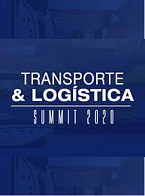
Event Transportation & Logistics Summit 2020
Francisco Alonso
(2020). Participació en congressosDr. Francisco Alonso, Director of INTRAS, has participated in the event Transport & Logistics Summit 2020 held in Santo Domingo (Dominican Republic) on March 12, 2020. The event, organized by Revista Mercado, marks the path of the future of the air, maritime, land and logistics transport sector, led by the best local and international experts. Dr. Alonso has been part of the Panel "A shared vision", within the Terrestrial Block introduced by Claudia Franchesca de los Santos, Director of the National Institute of Land Transport (INTRANT), who highlighted that the Dominican Republic has the maximum road infrastructure in Central America and that the focus is related to finishing ordering...
Dr. Francisco Alonso, Director of INTRAS, has participated in the event Transport & Logistics Summit 2020 held in Santo Domingo (Dominican Republic) on March 12, 2020. The event, organized by Revista Mercado, marks the path of the future of the air, maritime, land and logistics transport sector, led by the best local and international experts. Dr. Alonso has been part of the Panel "A shared vision", within the Terrestrial Block introduced by Claudia Franchesca de los Santos, Director of the National Institute of Land Transport (INTRANT), who highlighted that the Dominican Republic has the maximum road infrastructure in Central America and that the focus is related to finishing ordering the vehicular flow.
Read more Hide -
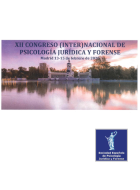
12th (Inter) National Congress of Legal and Forensic Psychology
Francisco Alonso
(2020). Participació en congressosDr. Francisco Alonso presented the paper "Relationship between the Psychology of Traffic and Spanish Road Safety and the implementation of the plans derived from Law 63-17 on Mobility, Land Transport, Traffic and Road Safety of the Dominican Republic”, within the Board of Experts "Professional performance in the Recognition Centers. Strengths and weaknesses", in the 12th (Inter) National Congress of Legal and Forensic Psychology held in Madrid from February 13 to 15, 2020, and organized by the Spanish Society of Legal and Forensic Psychology (SEPJF
-
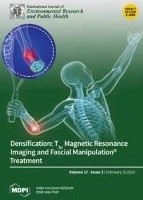
Behavioral Health at School: Do Three Competences in Road Safety Education Impact the Protective Road Behaviors of Spanish Children?
Francisco Alonso,Adela González, Cristina Esteban, Sergio Useche
(2020). ArticleInternational Journal of Environmental Research and Public Health. No.17:935
Background: Education in road safety (also known as Road Safety Education—RSE) constitutes, nowadays, an emergent approach for improving present and future road behaviors, aiming at taking action against the current, and concerning, state-of-affairs of traffic crashes, through a behavioral perspective. In the case of children, and despite their overrepresentation in traffic injury figures, RSE-based strategies for behavioral health in transportation remain a “new” approach, whose impact still needs to be empirically tested. Objective: The aim of this study is to assess the impact of three key road safety skills of the Positive Attitudes, Risk perception and Knowledge of norms (PARK) model,...
Background: Education in road safety (also known as Road Safety Education—RSE) constitutes, nowadays, an emergent approach for improving present and future road behaviors, aiming at taking action against the current, and concerning, state-of-affairs of traffic crashes, through a behavioral perspective. In the case of children, and despite their overrepresentation in traffic injury figures, RSE-based strategies for behavioral health in transportation remain a “new” approach, whose impact still needs to be empirically tested. Objective: The aim of this study is to assess the impact of three key road safety skills of the Positive Attitudes, Risk perception and Knowledge of norms (PARK) model, addressed in RSE-based interventions, on the safe road behavior of Spanish children. Methods: For this cross-sectional study, a representative sample of 1930 (50.4% males and 49.6% females) Spanish children attending primary school, with a mean age of 10.1 (SD = 1.6) years, was gathered from 70 educational centers across all Spanish regions, through a national study on RSE and road safety. Results: Road safety skills show a positive relationship with children’s self-reported safe behaviors on the road. However, the knowledge of traffic norms alone does not predict safe behaviors: it needs to be combined with risk perception and positive attitudes towards road safety. Furthermore, the degree of exposure to previous RSE interventions was shown to have an effect on the score obtained by children in each road safety skill; on the other hand, road misbehaviors observed in parents and peers had a negative impact on them. Conclusion: The outcomes of this study suggest that education in road safety is still a key process for the acquisition of safe habits, patterns and behaviors among young road users
Read more Hide DOI: 10.3390/ijerph17030935ISSN: 1660-4601 -

Job stress and emotional exhaustion at work in Spanish workers: Does unhealthy work affect the decision to drive?
Francisco Alonso, Cristina Esteban, Adela González, Elisa Alfaro, Sergio Useche
(2020). ArticlePLoS ONE. No.15(1): e0227328
Objectives The purpose of this study was to assess the relationships among the following elements: unhealthy work indicators (job stress and emotional exhaustion at work), the decision to drive (or not), and driving crashes suffered by Spanish workers. Methods For this cross-sectional study, a full sample of 1,200 Spanish drivers (44% women and 56%men) was used, their mean age being 42.8 years. They answered a questionnaire divided into three sections: demographic and driving-related data; burnout, job stress, and life stress; and self-reported road behaviors and driving safety indicators. Results Overall, 41.6% of drivers reported emotional exhaustion at work. Furthermore, 80.2% of...
Objectives The purpose of this study was to assess the relationships among the following elements: unhealthy work indicators (job stress and emotional exhaustion at work), the decision to drive (or not), and driving crashes suffered by Spanish workers. Methods For this cross-sectional study, a full sample of 1,200 Spanish drivers (44% women and 56%men) was used, their mean age being 42.8 years. They answered a questionnaire divided into three sections: demographic and driving-related data; burnout, job stress, and life stress; and self-reported road behaviors and driving safety indicators. Results Overall, 41.6% of drivers reported emotional exhaustion at work. Furthermore, 80.2% of the participants showing substantial signs of job stress or exhaustion had experienced one or more important stressful life events during the previous year. Job stress was associated with the number of driving crashes suffered along the last 3 years. Also, and especially in sit-uations where drivers admit not feeling well enough to drive, job stress and emotional exhaustion seem to be independent from the decision to drive, and from perceiving these variables as potential impairers of driving performance. Conclusions First of all, this study showed a high prevalence of job stress and emotional exhaustion symptoms experienced at work by Spanish workers. Moreover, significant relationships were found among self rated driving performance, workplace stress and burnout indicators, which suggests that job stress and emotional exhaustion levels may, indeed, impair driving performance, but they do not influence the decision to drive or not. In other words, even when they are significantly affected by job stress or emotional exhaustion at work, most Spanish drivers still drive.
Read more Hide DOI: 10.1371/journal.pone.0227328ISSN: 1932-6203









